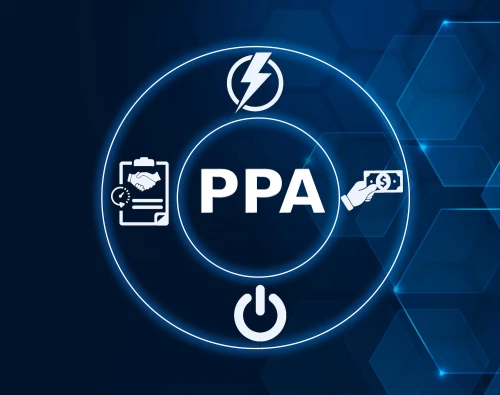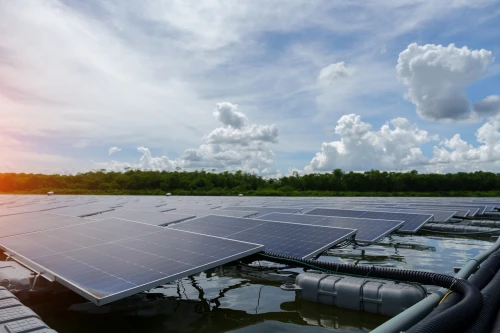
May 2nd, 2025
Join our Italian Energy Day on 20 May – Book now
Ever since we started developing short-term power market tools for the continental markets in Europe, people have been asking about German balancing insights.

Learn moreIn Germany, all balancing market information is delayed by at least half an hour, except for parties that participate in the FCR, aFRR and mFRR energy markets (frequency control and restoration reserves). They have assets responding to system signals from the transmission system operators (TSO’s), and therefore get continuous feedback telling them if the power system is seeing a shortage or a surplus, well… has been experiencing, I should say.
As system operators in Germany are not allowed to preemptively activate balancing reserves, the activation is always a response to something that happened in the past.
It has been an open secret for many years that market parties that participate in balancing markets and have multiple bids and offers to ramp capacity up or down, to rebalance the grid, have this information much earlier than other market participants. Prequalifying an asset to participate in reserve markets takes time and effort and not all assets can participate in these markets. Then there are also the non-physical trading parties, that have no assets at all, but that do provide massively increased liquidity in the markets in which they are active.

After a recent article from my colleague Nathan Witkop, the German regulator has launched a probe to investigate if market parties are benefitting from the early access to the balancing information. I’m not a lawyer, so I won’t speculate about the potential outcome of the investigation. My reasoning is, that if you are participating in a balancing mechanism, you should know if your asset is available and since you can only change your bids into the mechanism up to 25 minutes before delivery, the impact on balancing prices will not be huge. As a trader/dispatcher you need to look forward to be effective.
The question is then, does the information help you on the continuous intraday market. If you are optimizing an asset over the sequence of markets in which it can generate revenues:
Ancillary Services Capacity for FCR, aFRR, mFRR (regelleistung) (€/MW per time unit)
Day Ahead Auction (€/MWh)
Intraday Auctions (€/MWh)
Continuous Intraday Trading (€/MWh)
aFRR, mFRR activation prices, following obligations from Ancillary Capacity Auctions (regelarbeit) (€/MWh)
To determine your optimal running pattern, you need to know if your asset has been providing reserves, if it is running, at which level it is running and how much flexibility is available. Otherwise, you cannot optimise. A trader needs to know this, and he cannot suddenly “un-know” the information if the asset has been activated in a balancing market.
So, whether it is insider knowledge or not, to get the most efficient dispatch of power assets, it is crucial that market participants know the run-level of a power plant, the state-of-charge of a battery, the volume of a water reservoir. So how do you solve the information gap between participants with this knowledge and those without?
Discover Montel's German imbalance forecast
The easiest way to prevent the danger of creating insider knowledge is to remove the information gap, not by withholding information from traders optimising assets, but by opening it up to the whole market. The Danish, Dutch and Belgian TSO’s do the same, there is only one minute of lag between the balancing actions and the publication, which puts everyone at the same level.
We have seen commercial attempts to make reserve market data transparent, at a fee, but this favours the parties with the deepest pockets and in all honesty, measuring the frequency in real time, or putting sensors below power lines still only gives you a look back.
We’ve seen attempts at detecting outages of power plants, for example. But the plant with the outage will not be allowed to trade with you, even if you both know it has had an outage, until it has published the outage on a REMIT transparency platform. Trading before that qualifies as trading with insider knowledge. So, using the information to take advantage of an outage would only work by trading on the power exchange, de facto with a party that does not have this information (yet). Does this class as good analysis or insider knowledge? Again, I’m not a lawyer, but it looks like a grey area to me.
To level the playing field, removing the delay in data publication is the fastest solution for both issues. It will put Stadtwerke, large generators and power traders at nearly the same level of transparency, so they can take decisions based on similar information. This information, by the way, will will then be visible for all in their rear-view mirror!
Now that we’ve established that having balancing market information in a transparent market is only useful for modelling purposes and does not give you any special insights (note: this has not happened in Germany yet!), how do we move from looking at historic data towards twists and turns in the road ahead?
This works very similar to how you drive a car in busy traffic. On the one hand, you know the rules of the market, you can see how people should behave and if they have been very rude to you, you want to keep a close eye on their movements going forward. Also, by looking ahead at the brake lights of the people ahead of you, you may be able to see trouble coming, even if you don’t see what they see, yet.
This translates to the power market in watching changes in forecasts (weather, power plant availability), in checking if the updated forecasts translate into actual values that line up. It means you watch trading behaviour on the power exchange, as continuous prices show you the sentiment in the market and a sudden flare up in prices or in trading volume can signal an incident. Like driving a car, you respond, before you see what exactly is going on, you want to brake or accelerate with the cars around you to avoid hitting them or avoid being hit by anyone yourself.
In the paragraph below we explain what we have developed for anyone that is responsible for managing balancing risk or optimising an intraday power portfolio. You cannot steer a car by looking in your rear-view mirror and you should not drive a power portfolio that way either!
At Montel Analytics we have translated this approach into a product that forecasts the fundamental balancing volume in the German market for up to 12 hours ahead. Especially the last 4 hours before delivery, when trading is at its most liquid, show the best results, but having this analysis on your screen, supported by the fundamentals beneath it, will help you navigate risk more effectively. The steps we go through are the following:
We look at fundamentals to determine the “state-of-the-market”, how much fast responding generation capacity is online, what prices are being offered in the balancing market. How sensitive was the day ahead auction and what are the most recent changes in weather forecasts? Are there any new outages being reported and how much cross-border capacity is available for trading yourself out of trouble?
Then we check the actual market behaviour, do renewable forecasts line up with the weather forecasts? We have machine learning models running to adjust weather-based forecasts to incorporate these “deltas” and adjust your view on the hours ahead.
Then we look around at the intraday continuous market, at which prices are the periods ahead being traded, what are the traded volumes, how do they offset versus the day ahead price and what does that mean? In short, does the market think it will see a shortage or a surplus, or is it not sure yet?
Finally, we map the previous balancing behaviour of the day on top of this estimate, so we can spot any inherent volatility that might not be covered by our models yet. This feedback loop provides us with another insight, to help you get a better view, but also to continuously improve our model, even if market behaviour changes over time.
When we ran the model to the side of a naïve trading strategy, we noticed that we were not only able to predict the direction of the balancing market, the volume of activated reserves and get a rough idea on balancing prices. The analysis also helped us foresee movement on the intraday continuous market. This is crucial, as in Germany it is not allowed to consciously have an open imbalance position.
In short, we have developed an analysis that allows you to optimise your portfolio ahead of time and take advantage of trends in the intraday markets, while managing your balancing risk. The tool helps you decide when it is the right moment, to close an imbalance position in your portfolio.
When we put this live, we realised that following the evolution of the forecast is crucial to getting a feel for how you can use it in specific use-cases. This is why we have added a forecast-evolution data-feed to the product, you can see what the forecast was from 4 hours to delivery to 15 minutes before delivery.
Finally, we also added a probabilistic forecast to show you the chances of the system seeing a shortage or a surplus going forward. In this analysis we also include a percentage for the chance that the system is “neutral”, which is the chance of the imbalance market seeing a volume that is lower than 150 MW in either direction, these volumes are so small, that the margin for error is too big to base a decision on.
This all combines with real-time information in our Germany Power-Live module, which gives you a lot of fundamental and real-time information about the German power market, to support your unique decision process and to analyse market behaviour historically. It allows you to create specific dashboards for your situation, allows you to download data automatically through our data feeds (API), so you get the most out of the information.
Navigate German balancing markets with confidence

May 2nd, 2025

May 1st, 2025

April 30th, 2025